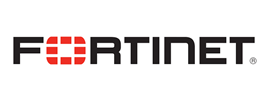- Course overview
- Course details
- Prerequisites
Course overview
This five-day course is designed to provide students with the tools required for implementing, monitoring, and troubleshooting Layer 3 components in an enterprise network. Detailed coverage of OSPF, BGP, multicast, class of service (CoS), and EVPN-VXLAN is covered in depth. The course also exposes students to common troubleshooting commands and tools used to troubleshoot various intermediate to advanced issues. Through demonstrations and hands-on labs, students will gain experience in configuring and monitoring the Junos operating system and in monitoring device and protocol operations.
This course uses Juniper Networks vSRX virtual firewall for the hands-on component, but the lab environment does not preclude the course from being applicable to other Juniper hardware platforms running the Junos OS. This course is based on Junos OS Release 19.3R1.8.
Course details
Day 1
Module 1: Course Introduction
Module 2: OSPF
• OSPFv2 Review
• Link-State Advertisements
• Protocol Operations
• OSPF Authentication
• OSPFv3
Lab 1: Configuring and Monitoring OSPF
Module 3: OSPF Areas
• Review of OSPF Areas
• Stub Area Operation
• Stub Area Configuration
• NSSA Operation
• NSSA Configuration
• Route Summarization
Lab 2: Configuring and Monitoring OSPF Areas and Route Summarization
Module 4: Advanced OSPF Options
• OSPF Multi-Area Adjacencies
• Virtual Links
• External Reachability
Lab 3: Configuring and Monitoring Routing Policy and Advanced OSPF Options
Day 2
Module 5: Troubleshooting OSPF
• Troubleshooting LSDB Consistency Issues
• Case Study: Adjacency Issues
Lab: Troubleshooting OSPF
Module 6: BGP
• Review of BGP
• BGP Configuration Options
• BGP Operations
• BGP Path Selection and Options
Lab: Implementing BGP
Module 7: BGP Attributes and Policy
• Policy and BGP
• BGP Attributes
• Details and Manipulation of Common BGP Path Attributes
Lab: BGP Attributes
Module 8: Troubleshooting BGP
• BGP Troubleshooting
• BGP Case Study
Lab: Troubleshooting BGP
Day 3
Module 9: Enterprise Routing Policies
• Enterprise BGP Core Network Design
• Enterprise External Network Deployment
Lab: Implementing Enterprise Routing Policies
Module 10: Troubleshooting Policies
• Routing Policy Structure
• Using RegEx
• Routing Policy Troubleshooting
• Case Study
Lab: Troubleshooting Routing Policies
Module 11: Introduction to Multicast
• Overview of Multicast
• Multicast Addressing
• RPF
• IGMP
Lab: PIM-SM
Day 4
Module 12: Multicast Routing Protocols and SSM
• Overview of Multicast Routing Protocols
• PIM-SM Using the ASM Model
• PIM-SM Using the SSM Model
Lab: Implementing PIM-SM
Lab: Implementing SSM
Module 13: Troubleshooting Multicast
• Multicast Troubleshooting
• Multicast Case Study
Lab: Troubleshooting Multicast
Module 14: Class of Service
• CoS Components Review and Case Study
• CoS Processing and CoS Defaults on the SRX Series Device
• Policing
• Virtual Channels
• Monitoring with Resource Performance Monitoring
Lab 9: Implementing CoS Features in the Enterprise
Module 15: Troubleshooting Class of Service
• CoS Troubleshooting
• CoS Case Study
• Lab: Troubleshooting Class of Service
Day 5
Module 16: Enterprise Architectures
• Traditional Enterprise Networks
• A New Architecture
• Key Concepts of the Evolved Core
• IP Fabric Campus Design
Module 17: VXLAN
• Layer 2 Connectivity over a Layer 3 Network
• VXLAN Overview
• VXLAN Gateways
Module 18: EVPN-VXLAN
• Overview of EVPN
• EVPN Operations
• EVPN and VXLAN
Module 19: Configuring EVPN-VXLAN
• Configuring EVPN-VXLAN Spine Only network
• Add IP Fabric leaf nodes to a Spine Only design
• Configuring a new IP Fabric EVPN-VXLAN network
Module 20: Migrating to an IP Fabric
• EVPN Routes
• Useful EVPN Commands
Appendix A: BGP Route Reflection
• Route Reflection Operation
• Configuration and Routing Knowledge
Lab: BGP Route Reflection (Optional)
Appendix B: Troubleshooting IS-IS
• IS-IS Troubleshooting
Lab: Troubleshooting IS-IS and Mixed Environments
Appendix C: Additional Troubleshooting
• RIP Troubleshooting
• IGP Troubleshooting Case Studies
• IGP Support for IPv6
Lab: BGP Case Study
Prerequisites
Students should have basic networking knowledge and an understanding of the Open Systems Interconnection (OSI) model and the TCP/IP protocol suite. Students should also have working experience with basic routing principles.
Students should also attend the Introduction to the Junos Operating System (IJOS) and Junos Intermediate Routing (JIR) courses prior to attending this class.
Enquiry
Course : Advanced Junos Enterprise Routing
Enquiry
request for : Advanced Junos Enterprise Routing





















